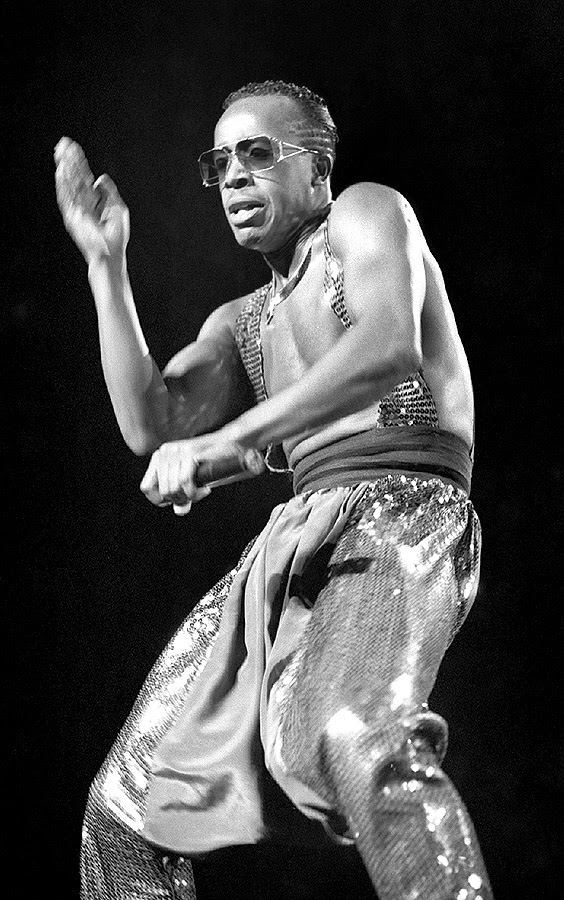 |
| MC Hammer, Skydome, Toronto, Oct. 1990 |
(2020 UPDATE: My friend Steven Lungley - who I met at this show - notes (accurately) in his blog post about this gig that the concert actually happened at the Skydome, home to the Toronto Blue Jays.)
I spent a lot of time hunched on the floor in clubs or peering over the lip of stages in big concert halls and stadiums, so it was inevitable that I would master the set of skills required to shoot under the extremely variable lighting conditions of live music. I could, without breaking a sweat, produce well-composed, sharp images that would hold up under the harsh technical requirements of mechanical reproduction in newspapers in the age of halftone cameras. The big question at this point was: So what?
 |
| MC Hammer, Skydome, Toronto, Oct. 1990 |
Alex Waterhouse-Hayward is a Vancouver photographer whose long-running blog was an inspiration for this site. Back before I even owned a camera, he had identified the big problem with shooting live music. In a post looking back on a shoot he did with Siouxsie & The Banshees in 1981, he recalled that thanks to the physical limitations of concert photography, "even though we were given access to shoot in what we called the media pit (right next to the stage floor) my pictures looked like anybody else’s or not as good."
With a regular gig shooting musicians passing through town for Vancouver magazine, he was desperate to find a way to make his work stand out from the crowd, and discovered that it was harder than he imagined. For a while he decided to go against the conventional wisdom of live music photography and shoot with slow film and a combination of on-camera flash and long shutter speeds - a technique that I'd eventually know as "flash and burn," and which reached its peak with the grunge band photos of Charles Peterson, just over the border from Alex in Seattle.
 |
| MC Hammer, Skydome, Toronto, Oct. 1990 |
Still, they were small innovations, easily copied by other photographers, and the challenge of establishing a unique style always remains. Waterhouse-Hayward recalled a few years later, when he was teaching photography at an arts school in Vancouver:
I remember once when I told my students that it was virtually impossible to shoot band at concerts in an original way. One particular female student was extremely aggressive and told me I knew nothing and had no experience. She told me that my rock swirls (the slow shutter ones) were simply bad photography.
I tried to stress that the single most important aspect in personal photography was to develop a personal style. I called the personal style the Holy Grail of photography. But it was to no avail and I see now, more than ever pictures of performing bands (sharp, well exposed, bright colours, etc) that are boring, banal and all pretty well look the same. In fact if you are in front of a band at a concert with a very good camera I guarantee that the pictures you will take will look like somebody else’s. In 1982 having the pictures "turn out" was not a sure thing. It is now a sure thing but that does not necessarily include style.There are two things you can learn from this story. The first is that young people are infuriating idiots who should be ignored. The second is that technological progress doesn't necessarily travel in tandem with creative innovation. The more you learn - and the more your gear is capable of achieving - the more likely it is that you'll have to work harder to break through the glass ceiling of mere competence. By 1990 I was learning this lesson.
No comments:
Post a Comment